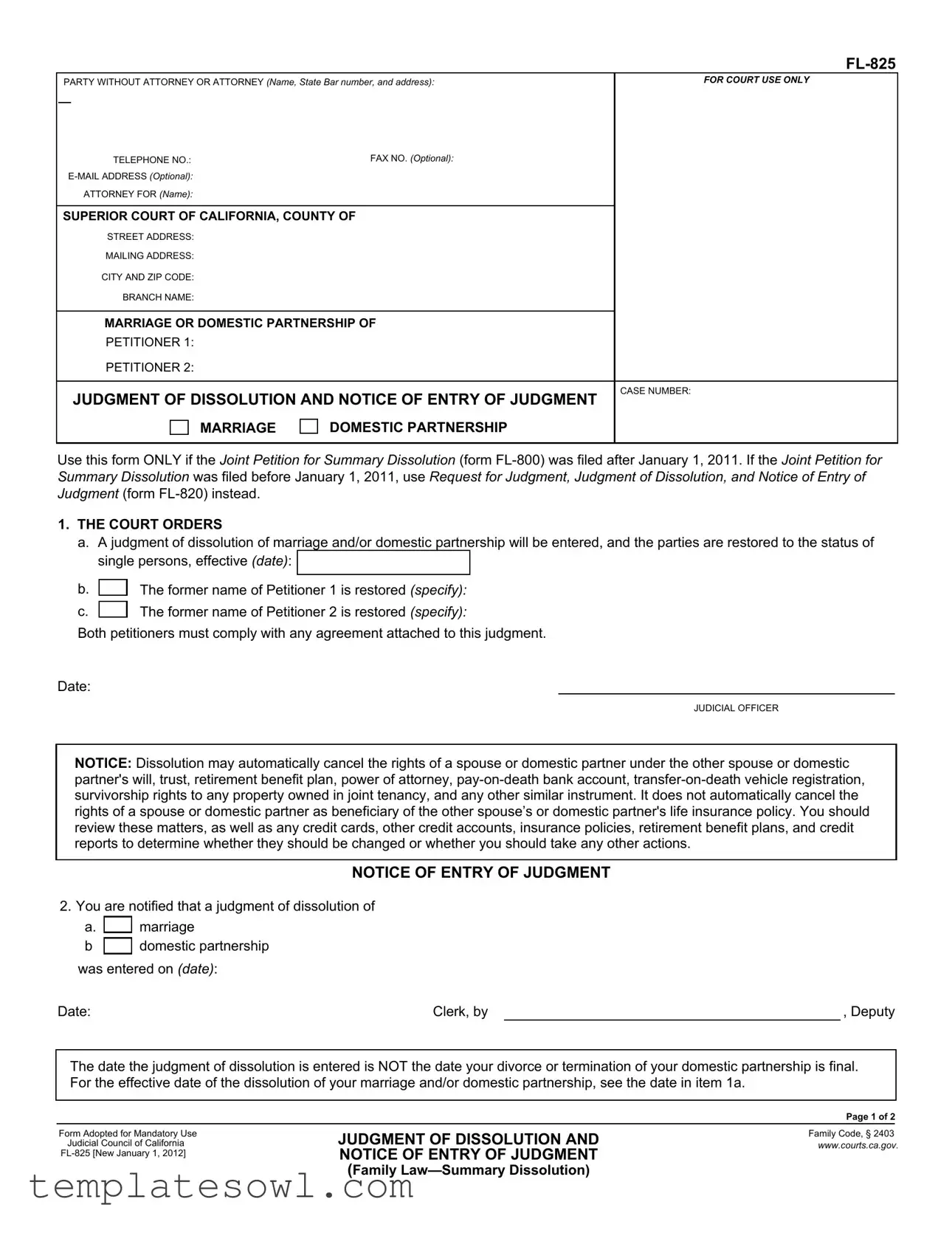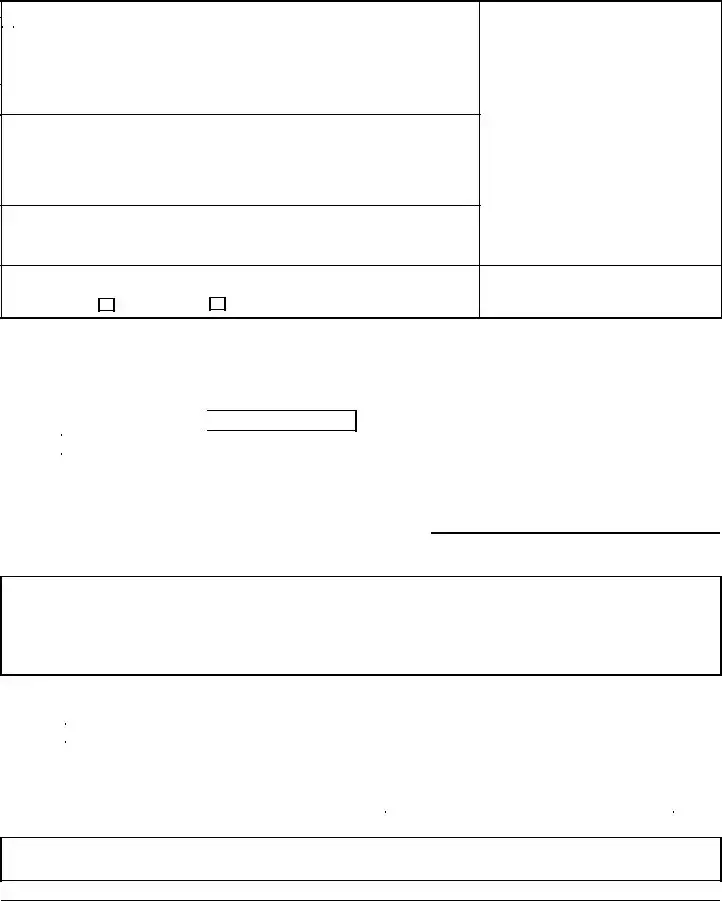What is the purpose of the FL All form?
The FL All form serves as a judgment of dissolution and a notice of entry of judgment for those who have filed a Joint Petition for Summary Dissolution in California. It formalizes the dissolution of marriage or domestic partnership and outlines the relevant information about both parties, such as their names and addresses. This form ensures that the court recognizes the dissolution and provides a clear record for both petitioners.
Who needs to use the FL All form?
This form is specifically for parties who previously submitted a Joint Petition for Summary Dissolution using form FL-800 filed after January 1, 2011. If the Joint Petition was filed before this date, parties must use a different form, known as the Request for Judgment, Judgment of Dissolution, and Notice of Entry of Judgment (form FL-820).
What judgments does the FL All form include?
The form includes judgments regarding the dissolution of marriage or domestic partnership. It restores both petitioners to the status of single individuals. Additionally, it allows for the restoration of the former names of both petitioners, should they wish to revert to names they used prior to the marriage or partnership.
What should petitioners do after the judgment is entered?
After the judgment is entered, petitioners need to review several important documents and accounts. They should check wills, trusts, insurance policies, and retirement plans to understand how the dissolution affects their rights. In particular, they must be aware that dissolution automatically cancels rights under some instruments but not life insurance policies.
When is the effective date of the dissolution?
The effective date of the dissolution is not the same as the date the judgment of dissolution is entered. Petitioners should refer to the date specified in item 1a of the form to understand when their marriage or domestic partnership officially ends.
What happens if both petitioners do not comply with the attached agreement?
If both petitioners fail to comply with any agreements attached to the judgment, they may face legal consequences. Non-compliance could lead to contested issues in areas such as asset division or child custody, depending on the terms agreed upon in the dissolution process.
Can petitioners change their address after submitting the FL All form?
Yes, petitioners can change their address after submitting the FL All form, but they must ensure that the court is updated with their new addresses. This is crucial for receiving any future court notices or correspondences related to their case. It is good practice to keep all personal information current to avoid complications.
What should petitioners do if they have additional questions about the FL All form?
If petitioners have further questions regarding the FL All form, they should consider reaching out to the court clerk's office or seeking assistance from legal professionals. Various resources may be available to help answer questions about the dissolution process and ensure compliance with all requirements.




